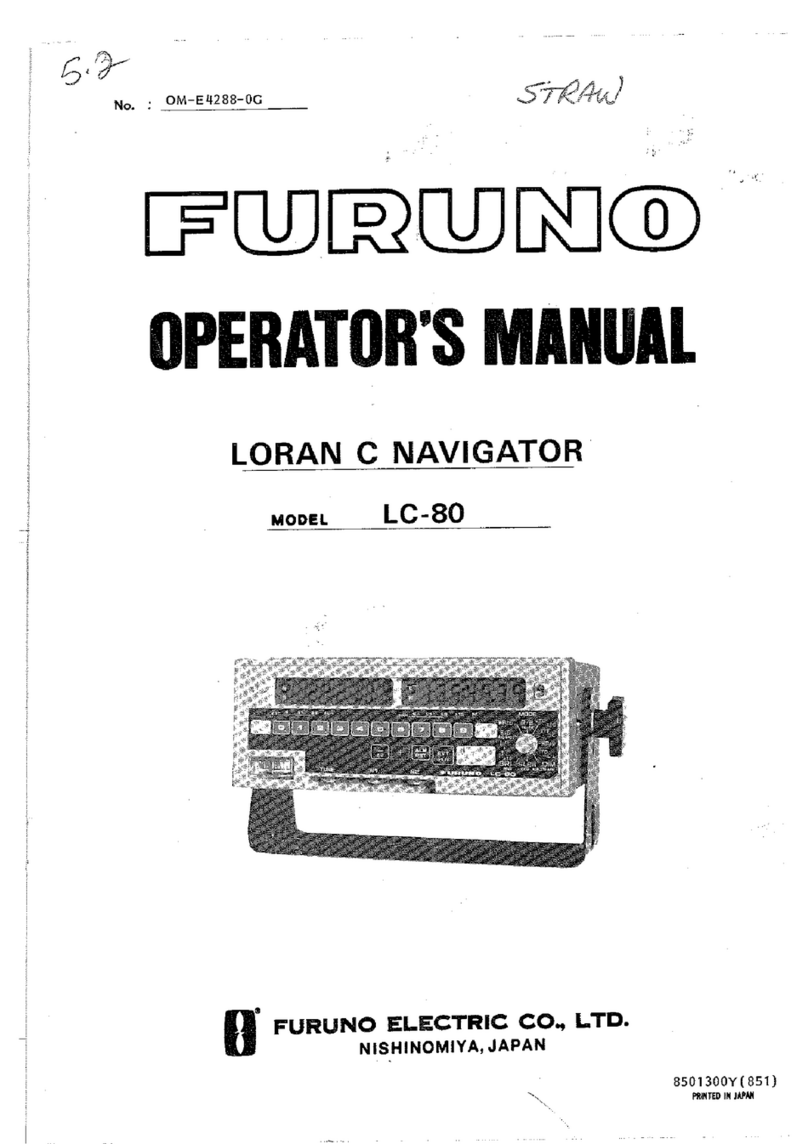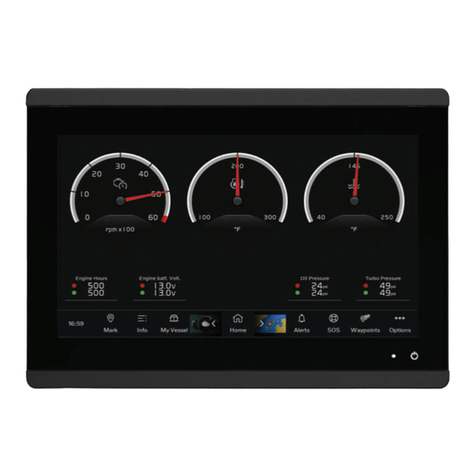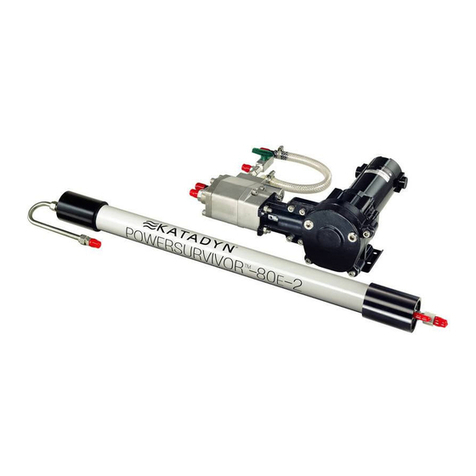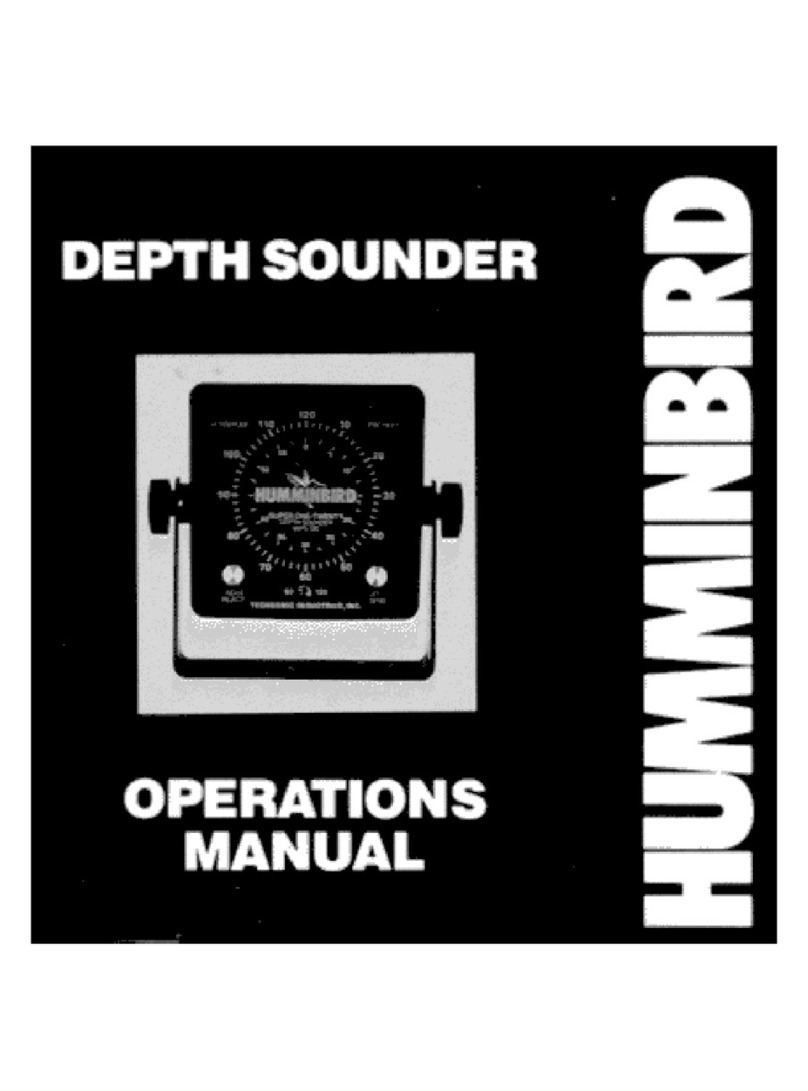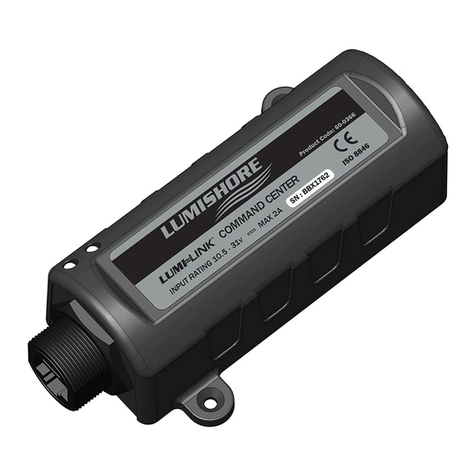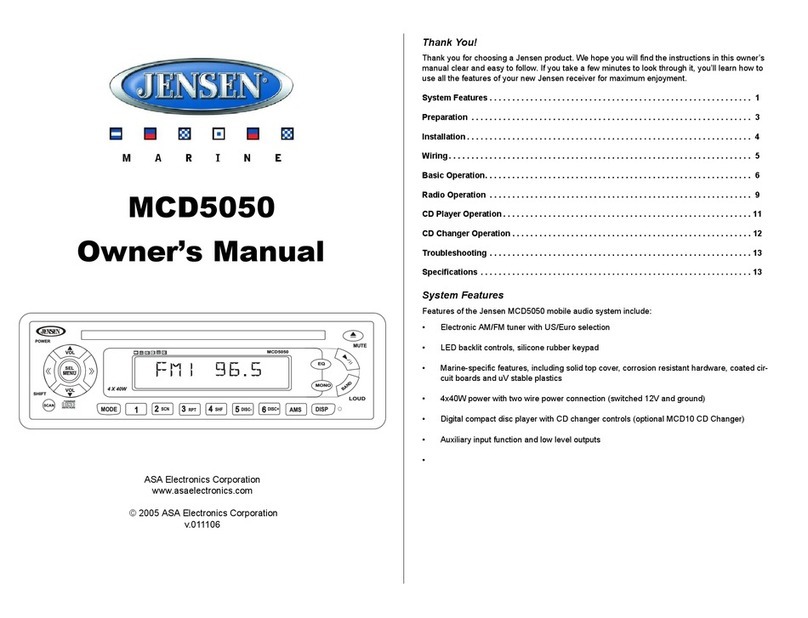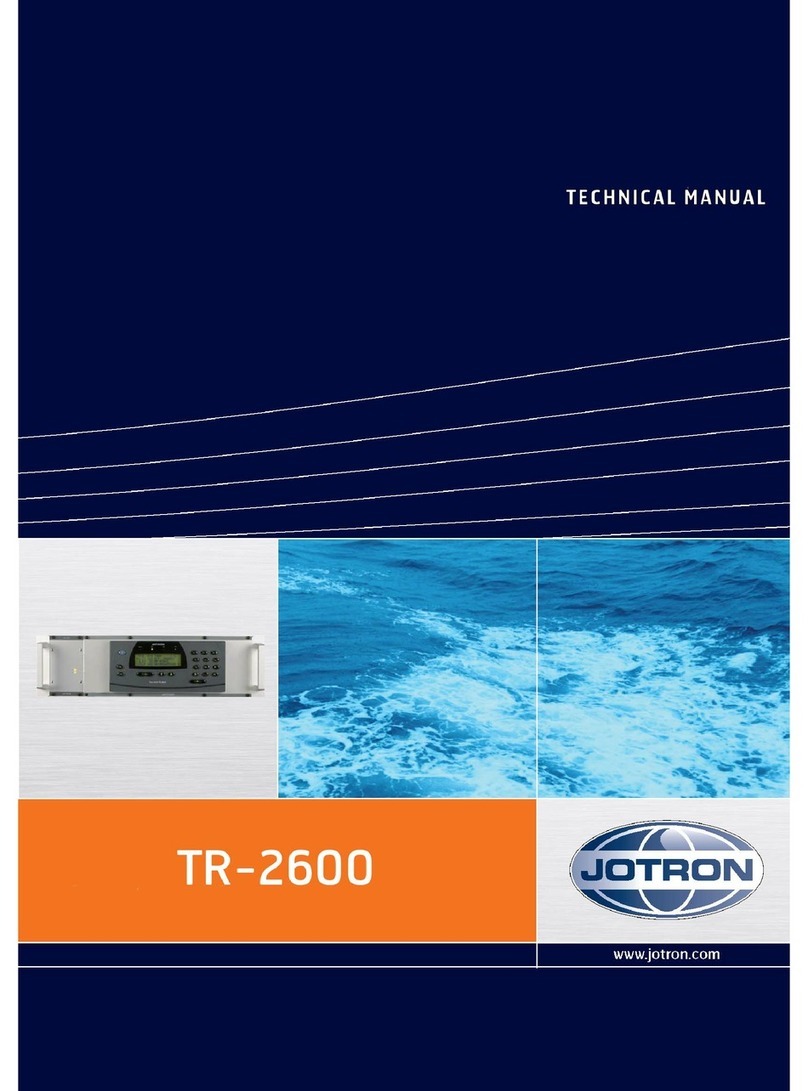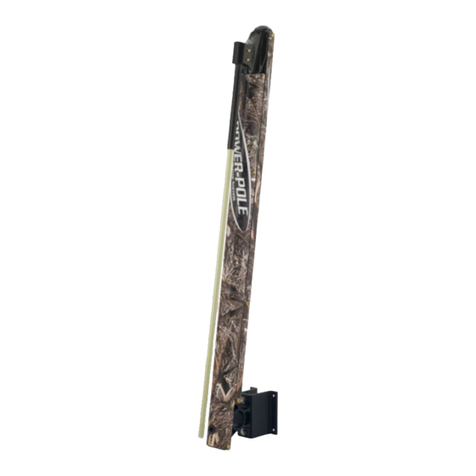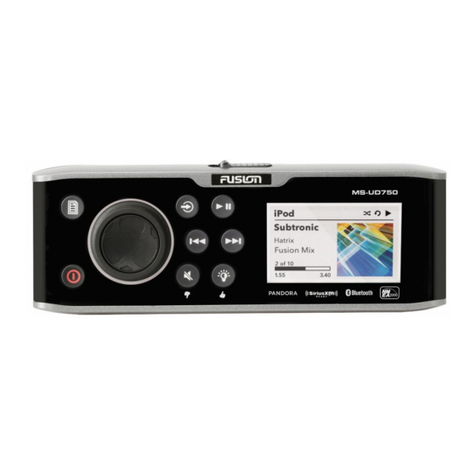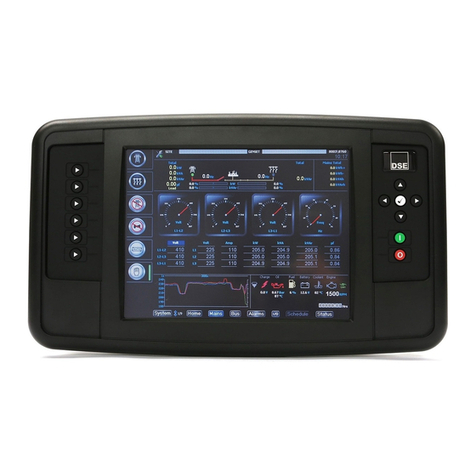PRAKTIK 6M User manual


TABLE OF CONTENTS
Introduction.....................................................................................................................2
Introduction to sonar.....................................................................................................4
Receiver, transducer and battery compartment ...............................................5
Sonar control................................................................................................................7
Sonar screen................................................................................................................9
Sonar operation........................................................................................................... 11
Sonar setup menu....................................................................................................... 13
Information display modes........................................................................................ 14
FISH ID .............................................................................................15
Pro ...................................................................................................17
Flasher ..............................................................................................18
Depth gauge.......................................................................................19
М.В ...................................................................................................20
Demo ................................................................................................20
Info...................................................................................................21
Scale.......................................................................................................................... 22
NOF .....................................................................................................23
ZOOM ..................................................................................................24
Conditions .............................................................................................25
Deaf zone.................................................................................................................. 26
Sound ........................................................................................................................ 27
Display....................................................................................................................... 27
General recommendations......................................................................................... 28
Possible malfunctions and troubleshooting.................................................33
Warranty..................................................................................................37
Manufacturer’s contact details ...................................................................38
Warranty card .............................................................................................................. 39
1

INTRODUCTION
Praktik sonars are designed to measure the depth of a water reservoir and
search for promising fishing spots.
The principle of Praktik sonars operation is based on the emission of
ultrasound waves intothewater by atransducer andthe subsequent reception
of echo pulses reflected from the bottom or other objects. The probe beam is
a cone, the top of which is a sensor, usually located just below the water
surface, and the base is the bottom. When an ultrasound wave encounters an
obstacle in its path, then part of it is reflected and returned back to the
transducer, and the receiver screen displays information about the presence
of an object.
The figures on the right show typical pictures on the sonar screen and the
information on the water reservoir in summer and winter corresponding to
these pictures.
It is very important to understand that the sonar does not display a three-
dimensional representation of the water column on the screen, but only its
projection onto a vertical plane passing through the middle of the sounding
cone. Thiscreatestheillusionthat all objects detectedby thebeam arelocated
under the sensor.
The principle of modern fishing consists not so much in finding fish, but in
determining the traditional habitats of fish. The main thing is to get an
understanding of the reservoir and the presence of fish in it. The role of the
sonar in solving this problem can hardly be underestimated. However, to fully
understand the picture displayed by it, you need to gain some experience.
2

Screen displayed in
Water reservoir in winter
winter
40 °
Screen displayed in
summer
Water reservoir in summer
3

INTRODUCTION TO SONAR
The Praktik 6 sonar consists of two units:
- electronic receiver unit (1);
- transducer (2) with battery compartment (3).
1
Display
(screen)
in work
mode
control
buttons
cord clamp
transducer
2 sealing ring
battery
compartment
АА battery
3
+
cable entry
4

Praktik 6М
Praktik 6S
sealed connector
soldered
connection
Receiver unit
The case of the receiver unit is durable and anti-vandal. The level of
tightness complies with IP 67. Elastic inserts around the perimeter of the case
protect the electronic component of the sonar against shock, vibration and
rough handling (including at low temperatures).
Transducer and battery compartment
Transducer design is frost-resistant and airtight (IP 68). The sensor is
screwed clockwise into the battery compartment. The silicone ring on the
sensor is used to seal the joint between the sensor and the battery
compartment. For reliable sealing, the sensor must be tightened with force.
When installing an AA battery, the polarity must be observed (see the figure
on the left).
IMPORTANT!
It is advisable to install the battery at home in a warm place. This will
prevent condensation in the battery compartment. Be careful when
replacing battery near a water reservoir. Protect the sensor from shock and
drowning.
5

In winter fishing conditions, the sensor must be lowered into the water
below the ice level to avoid the appearance of false signals reflected from
the vertical walls of the hole.
To save battery life, it is not recommended to leave the battery
compartment with the transducer sensor in the cold for a long time: during
operation, it must be completely immersed in water, the temperature of
which is always positive, and when not used, in a warm place under
clothing.
For correct depth measurement, the sensor must be placed vertically in
the water. It should beremembered that thedistanceto the bottom (depth)
and other objects is measured not relativeto the water surface, but relative
to the sensor.
To prevent the sonarfrom drowning in the pond, we recommend using the
Praktik float (attached to a cable) and/or Unibox (see www.rusonar.ru,
Accessories section).
ATTENTION! Do not bend the cable too much near the connector and battery
compartment, as shown in the figure below. Sooner or later this will damage the internal
conductors of the cable. In this case, you will need to replace the connector or the entire
kit (connector+cable+battery compartment).
7

Sonar Control
The sonar is controlled by 4 buttons.
Enabling/disabling sonar
Switch it on by holding the right button for a short time .
Switch it off by holding the right button for a long time .
Open/close MENU
Open the MENU in work mode by holding the right button for a short time
. Navigate through the MENU by pressing buttons up and down .
Activate/deactivate selected menu item by pressing left button .
Exit the MENU by pressing the right button .
Enabling/disabling screen backlight
Enabling/disabling the backlight in work mode by holding the left button for a
long time.
6

Sensitivity adjustment
To increase sensitivity level in work mode, hold the up button for a long time.
To decrease sensitivity level in work mode, hold the down button for a long
time.
Screen scaling up/down
To increase the depth scale in work mode, press the up button
.
To decrease the depth scale in work mode, press the down
button. Switching ZOOM window on/off
To switch the ZOOM window on/off in work mode, press the left button .
To increase the bottom layer from 1 to 5 meters –press the up button
in ZOOM mode.
To decrease the bottom layer from 1 to 5 meters –press the down button
in ZOOM mode.
Sonar reset
1. Switch off the sonar.
2. Press and hold theleft button, and then, without releasing theleft button, press
the right button once. “OK” appears on the display. Factory settings have been
reset.
8

Sonar screen
surface line
depth
soil density
screen scale
sensitivity indicator
objects (fish)
RTS window
sensitivity level
bottom relief
battery indicator
Water surface line is displayed as a moving dotted line.
Numerical value of depth is updated four times per second with an
accuracy of ± 5 cm for depths up to 10 meters and ± 10 cm for depths from 10
to 25 meters.
9

Soil density conditionally shows the power of the reflected echo from the
bottom and can vary from 0 to 22 units. The larger the number, the higher the
soil density (the harder the bottom) and vice versa. With the same reflectivity
of the bottom, the density value will decrease as the depth increases, since
the signal weakens.
Screen scale (depth scale) is how many meters of depth is shown on the
sonar screen. The letter "A" next to the number means automatic scale
selection; the letter "M" is manual scale (more details in the Scale section, p.
22)
Sensitivity indicator –the vertical bar visually displays a rough value of
sensitivity, and the number above the battery symbol indicates the exact
sensitivity level (in digits). Sensitivity can be adjusted in the range from 0 to 28
units. The default value is 10 units. The bar is displayed on the screen only in
work mode when the sensitivity adjustment is turned on.
RTS window is the area of the screen (in FISH ID mode), in which all
registered echoes fromthe bottom and other objects aredisplayed without any
processing. Processed information is displayedin themainarea of the screen.
(bottom line, bottom structures, and fish symbols).
Battery indicator shows the current battery capacity. The battery condition
can be estimated more precisely in the "Info" mode, where the battery voltage
is indicated in volts. Themaximum battery voltage at which the sonar can fully
operate is 0.85 V.
10

SONAR OPERATION
General work procedure:
1. Unscrew the sensor from the battery compartment (counterclockwise).
Insert a battery into the battery compartment observing the polarity (the plus
sign on the battery should be at the bottom of the battery compartment).
Replace the sensor by turning clockwise. To seal it, just tighten the sensor by
hand.
2. Press theright button . Praktik 6screen saver will appear onthescreen,
and the screen backlight will turn on for a couple of seconds. After a few
seconds, the device will go into operating mode.
ATTENTION! After installing the battery, it is recommended that you reset
the device so that the factory settings are set in the device:
Scale
Auto zoom mode
Sensitivity level
10 units
Manual screen scale
7 meters
Screen view
Fish ID mode and RTS
window
Sound and fish identification
on
ZOOM
2 meters
Deaf zone
0.5 meters
Winter/summer mode
Summer
1

3. Using the cable, lower the sensor into water. In winter, it is advisable to
lower the sensor below the ice edge to prevent excessive cooling of the
battery, as well as to avoid the appearance of false signals reflected from the
vertical walls of the hole. After the sensor contacts the water, microbubbles
may appear on its sensitive surface, which can strongly disperse the
recorded signals and thereby reduce sensitivity and distort the true picture.
Bubbles must be removed by dipping the sensor in water several times, or
wiping the surface of the sensor.
4. If the sensor is stationary, then the bottom of the screen will be
displayed as a straight line.
5. If the sensor is mounted on a moving boat, the bottom topography and
bottom structures under theboat will be drawn onthe screen. If fish and other
objects swim through the beam cone, marks will appear on the screen at the
appropriate depth.
6. If there are too many signals in the RTS window, reduce the sensitivity.
7. If the sonar has been operating for more than 4 hours, and during this
timenone of the buttons havebeen pressed, the sonar will automatically turn
off.
! ATTENTION! Do not leave the battery in the battery compartment for a long
time, as even in the off state, the sonar consumes battery power. In this case,
power consumption is little to none, but gas is still released, and excessive
pressure inside the battery compartment can damage it..
12

SONAR SETUP MENU
Use MENU to control the work modes and fine-tune the sonar.
1-1
1-2
1-3
Menu
Menu
M e nu
Zoom
Sound On
Fish ID
Usual
Display
Scale
Conditions
Usual
Auto
Summer
NOF
Depth
3
0.5 m
After entering the MENU, the first menu item –MODES –appears on the
screen. To move to the next menu item, click the “up” or “down” buttons. To
enter the desired MENU item, press the left button and then use the “up” or
“down” buttons to select a parameter/value. To save the selected
parameter/value, press the left button again. Exit the MENU by pressing the
right button, or it closes automatically after 15 seconds. After that, the work
mode screen will appear.
1

MENU:
-MODES (Fish ID, Pro, Flasher, Depth gauge, Shallow water, Demo, Info);
-SCALE (manual and automatic);
- NOF (1, 2, 3, 4, 5, 6);
-ZOOM WINDOW (regular, wide, narrow);
- CONDITIONS (summer, winter);
- DEAF ZONE (0.2, 0.5, 1.0, 1.5, 2.0);
- SOUND (on/off);
-DISPLAY (regular, -/+180 degrees).
The settings made in the MENU are saved when you switch to another
mode, as well as when you turn off the sonar or replace the battery.
When replacing the battery, is the sonar is NOT SWITCHED OFF, user
settings are not saved! With such manipulations with the battery, all settings
will return to the factory default settings (reset).
INFORMATION DISPLAY MODES
This MENU item allows you to select the best mode for displaying
information on the screen.
•FISH ID –mode for detecting fish (displays fish outlines)
•Pro –professional mode (raw information)
•Flasher –for monitoring the tackle and the fish approaching it
•Depth gauge –accurate depth and spot measurement at the bottom
•Shallow water –shallow water mode
•Demo –mode for outdoor work
14

•Info –information about the device
FISH ID
The mode of processed information, in which the sonar identifies objects
such as fish and, when detected, displays the corresponding icons.
In this mode, display is divided into two unequal parts. In the main window
(left), the processed data (bottom, bottom structures, fish symbols) are
displayed, and in the right (RTS window) –all information received by the
sonar without any processing (the so-called "raw data"). In the RTS window,
you can observe echoes from all objects in the beam area. For example, a
vertically falling load (feeder) will be clearly visible in the RTS window, but it
will not be defined as a fish, and there will be no fish outline on the screen.
Fish is defined not as a biological object, but as an
object with a body density (scale, skeleton, bones,
swimming bladder) different from the density of
water. Accordingly, the stronger the signal, the larger
the fish the sonar will show.
In FISHID mode, three fish sizes can be displayed
on screen.
The fish recognition algorithm incorporated in the
Praktik sonars is based on measuring the nature of
the movement of an object caught in the beam. If the
nature of this object’s movement satisfies the
algorithm criteria, thenthe fish outline appears on the
screen.
1

For this reason, not all objects are considered a fish, but only those satisfying
certain conditions, due to which the sonar can sometimes “miss” real fish or,
on the contrary, take another object for it (for example, tackle).
Note that air bubbles from the boat’s motor or water swirls can also be
mistaken for fish by the sonar because of their high reflectivity and motion.
For correct fish identification, a correctly set sensitivity level is of great
importance.
With an increased level of sensitivity, especially in summer, when the sonar
can even register flowering water, thermoclines, orsuspended particlesduring
boat sail, it is likely that theseheterogeneitiesmay appear on thescreen in the
form of fish symbols. Shoals of fish juveniles canalso causelarge fish outlines
to appear on the screen. Decreasing the sensitivity will allow you to filter out
these "interfering" factors. It is impossible to give specific recommendations
on setting the sensitivity level, since the conditions of various water bodies
differ significantly.
Displaying information on the screen
The fish contours that appear next to the RTS window (onthe left side ofthe
screen) are the fish that are currently located in the beam cone area. Further,
these contours move from right to left on the screen. With a frequency of 4 Hz
per second, the picture moves to the left, and this data is already referred to
as the “history.” For example, if the fish symbol is in the middle of the screen,
it means that the fish was in the beam 10 seconds ago.
16

Pro (professional mode)
In Pro mode or raw information display mode, the
entire screen is usedfor demonstrating raw data. The
sonar does not try to recognize fish, but shows all the
reflected signalsthat it was able to register. Thismode
is most useful for experienced fishermen, because it
allows them to see their tackle under water, detect
thermoclines, algae and other objects, and better
understand the structure of the water column.
All objects in this mode are displayed with stripes,
arcs, and pixels.
The picture on the screen will
depend on the sensitivity level.
For example, if you want to watch the moving of your
tackle on the sonar screen, you need to lower the
mormyshka (other tackle) into the hole to an average
depth or closer to the bottom and increase the sensitivity
until the signal from the tackle appears on the screen.
In Pro mode, you can often see information lying
“below” the bottom on the screen. For example, at shallow
depth and maximum sensitivity, not only the “second”
bottom may appear (as shown on the left), but also the
"third" one. This picture occurs when a signal is reflected
several times from the bottom and the water surface (the
so-called signal re-reflection) when setting the scale to
more than twice the bottom depth.
1

In the above figure, a scale of 5M is selected with a bottom depth of 2.36 m.
Flasher
Flasher mode is designed to monitor objects in real
time. This mode will be ineffective at shallow depths
(2-3 meters), but working in deep water will allow to
observe real pictures of the bait movement and, most
importantly, the fish’s reaction to these actions.
In Flashermode, thescreenis dividedintotwo equal
parts. On the left is the “history” window, which
displays unprocessed signals (like in Pro mode),
observed bythe sonar. TheFlasher is on the other half
of the screen: each time the screen is refreshed (4
times per second), it draws wide strips of marks of all
detected objects, including the bottom. Next to the
mark about the largest detected object, its depth is
displayed. The figure below shows how the position of
the balancer, which is currently at a depth of 3.4
meters, has changed.
The largest object is not digitized over its entire depth, but only starting from
1.5 meters from the surface or the deaf zone value. This measure was taken
to reduce the influence of near-surface signals.
Due to the large bandwidth, signal marks are more noticeable than regular
echoes in Pro modes, and the increased sampling frequency allows to display
information nearly in real time.
18

To fine-tune the operation of this mode, select the sensitivity. To do this, we
recommend lowering the balancer (or other gear) halfway or closer to the
bottom and select the sensitivity so that your tackle is confidently visible on
the screen.
Flasher mode is recommended for winter fishing, as in summer, there will
be more disturbing factors when working from a boat.
Depth Gauge
The Depth Gauge mode is intended not only for accurate depth
measurement, but also for displaying the diameter of the sonar beam spot at
the bottom (“trace” of the sonar). In this mode, sounding and signal processing
are significantly different from measuring depth in other sonar modes. Depth
measurement is especially
accurately performed in difficult conditions, such as
shallow water and overgrown ponds. No fish or other
information on the water column is displayed in Depth
Gauge mode.
The sensitivity, depth scale and other parameters of
the device are selected automatically depending on the
conditions in the water body. Deaf zone is always set to
0.5 m.
The diameter of the sonar spot at the bottom is
measured in meters below the base of the cone.
Screen view
in Depth Gauge mode
1
Table of contents
Popular Marine Equipment manuals by other brands
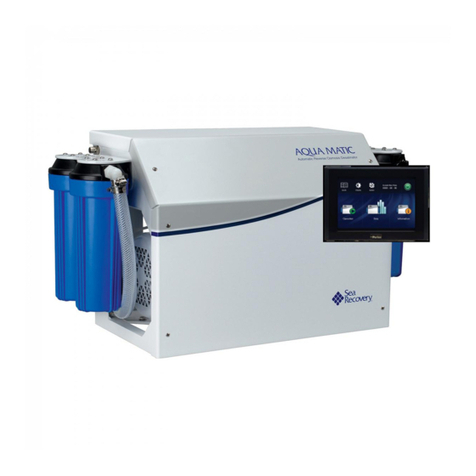
Sea Recovery
Sea Recovery SRC Aqua Matic 450-1 owner's manual
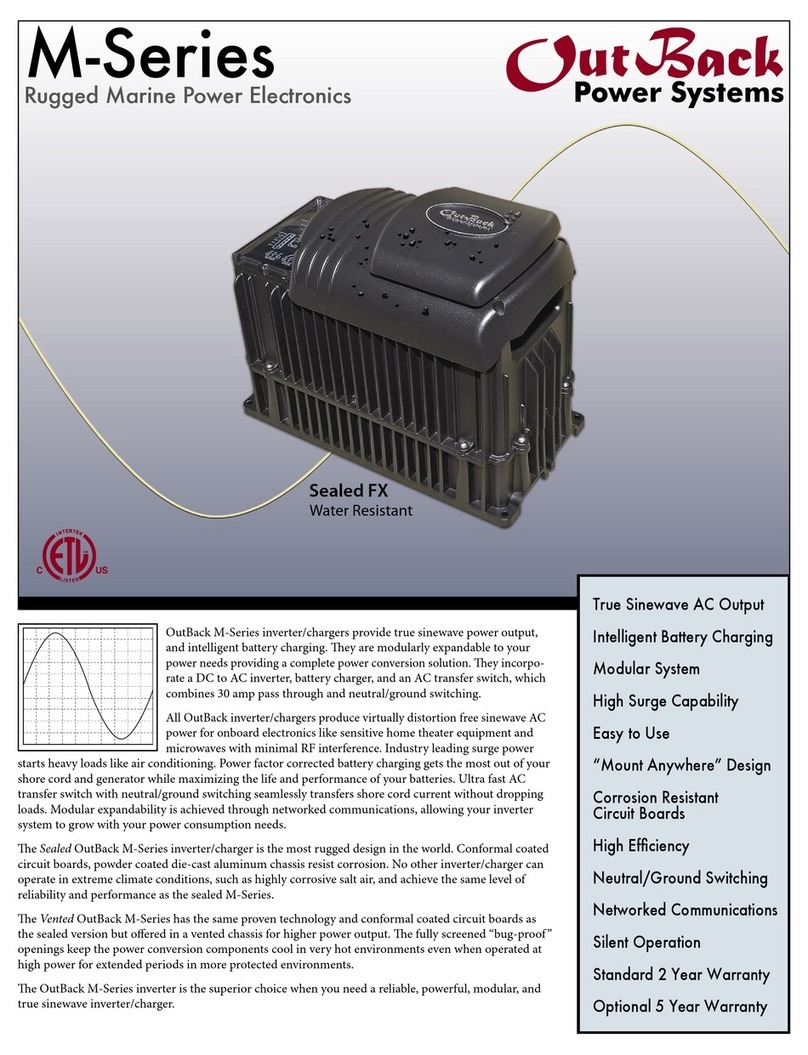
Outback Power Systems
Outback Power Systems FX 2012MT Specification sheet
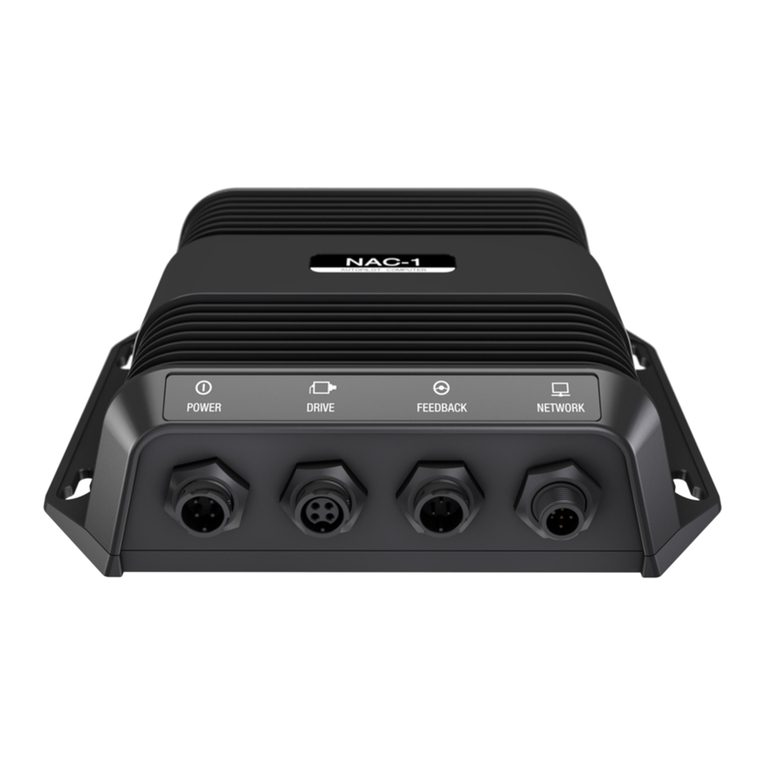
Simrad
Simrad Pump-1 installation guide
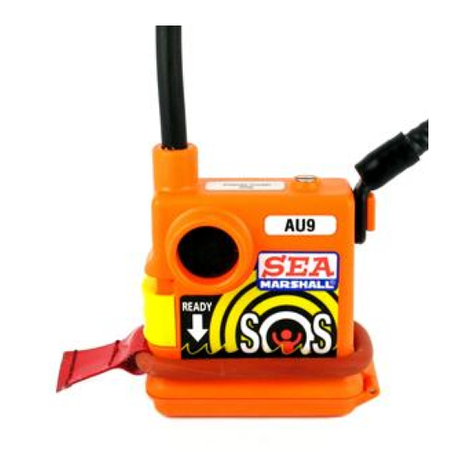
Sea Marshall
Sea Marshall AU9 operating instructions

Furuno
Furuno FCV-561 Operator's manual
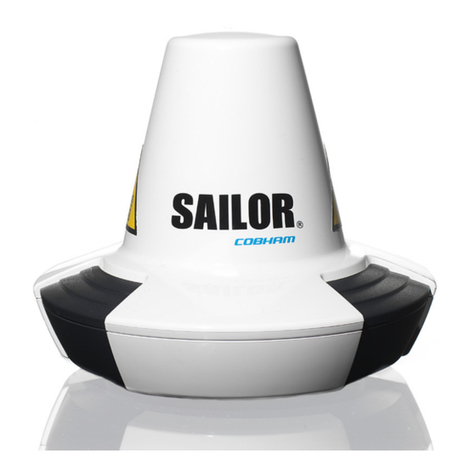
COBHAM
COBHAM SAILOR 6110 mini-C GMDSS installation manual
